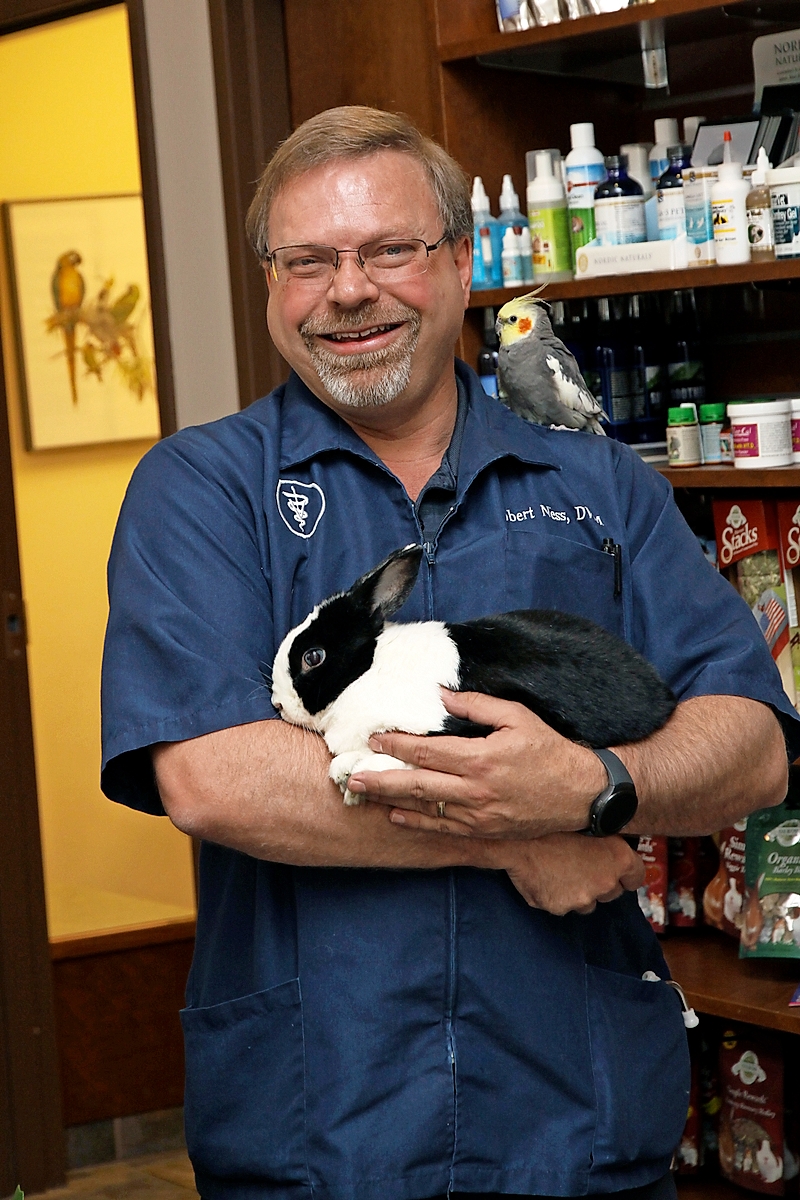Dream Job | Robert Ness
By Mark Zonca
May 2016 View more Influencers
 Robert Ness turned his passion for pets at a young age into a caring career for exotic animals. As the owner of Ness Exotic Wellness Center, this Lisle veterinarian specializes in treating exotic pets such as rabbits, ferrets, chinchillas, lizards, turtles and birds. His life mission is to help these animals live a full and healthy life, while fulfilling his dream job.
Robert Ness turned his passion for pets at a young age into a caring career for exotic animals. As the owner of Ness Exotic Wellness Center, this Lisle veterinarian specializes in treating exotic pets such as rabbits, ferrets, chinchillas, lizards, turtles and birds. His life mission is to help these animals live a full and healthy life, while fulfilling his dream job.
How did you become interested in veterinarian medicine?
I have always had pets growing up and into adulthood, so I always knew that I wanted to work with animals. Throughout my life, I’ve had everything from dogs, cats, horses, rabbits, guinea pigs, ferrets, hamsters, gerbils, sugar gliders, hedgehog, snakes, lizards, turtles, amphibians and a variety of birds. In taking care of this varying menagerie, I’ve developed a strong passion for learning about their proper care, ranging from basic husbandry and nutrition to their medical needs.
What made you decide to specialize in exotic and nontraditional pets?
While attending college in Champaign-Urbana, I took a job in a local pet store that sold a variety of birds and exotic pets in order to gain some experience. I developed a closer affinity to the parrots and assorted exotic pets. I actually started raising hamsters, gerbils, cockatiels and parakeets for the pet store to sell. The money I made raising these pets went back to supporting my hobby and collection of feathered, furry and scaly roommates. Over time, I realized that veterinary care was very limited for these species and specific knowledge on them was lacking in many areas. In researching medical information, I found that pioneering textbooks were just being published for pet birds and reptiles. In addition, much of the information on small mammals was being taken from wildlife and zoo texts. The idea that I could be part of the development of this field of veterinary medicine intrigued me.
What has been the most unique pet you’ve treated as a vet?
We commonly treat sugar gliders, which are the marsupial equivalent of flying squirrels. I was first introduced to them in the early ’90s when they just started showing up in the Chicago area. I adopted one that was relinquished to the clinic by a client who did not have the finances to treat him. My wife and I really liked this little guy and soon acquired others. We started breeding them as a small hobby and to learn more about them. Medical information was scarce on these marsupials, with some literature I found in Australian wildlife sources. As I learned more about this species through raising them and the literature that I uncovered, I started getting invited to speak at veterinary conferences and I was asked to co-author a chapter in a renown veterinary text on small exotic mammals, which I have since revised with another veterinarian. This is still the only mainstream veterinary text with medical information on sugar gliders.
Is it difficult to treat such a wide variety of animals?
Yes, it is often a challenge to treat some of our patients. Some medications commonly administered to dogs and cats are deadly to other species, for example amoxicillin is fatal to rabbits and guinea pigs. In addition, the metabolism varies dramatically between species. Each type of animal requires special restraint and handling, so not to injure them as well as facilitate sample collection for diagnostic tests. Some say that being a veterinarian is more difficult than being a human physician, due to vets needing to know everything about many species whereas physicians only specialize in one.
Do you have any pets of your own?
In my family, we currently have a Dutch rabbit (Jasper), two ferrets (Blitz and Dio), two leopard geckos (Crystal and Buttercup) and a mix-breed dog (Gabby).
Photo by Robyn Sheldon

